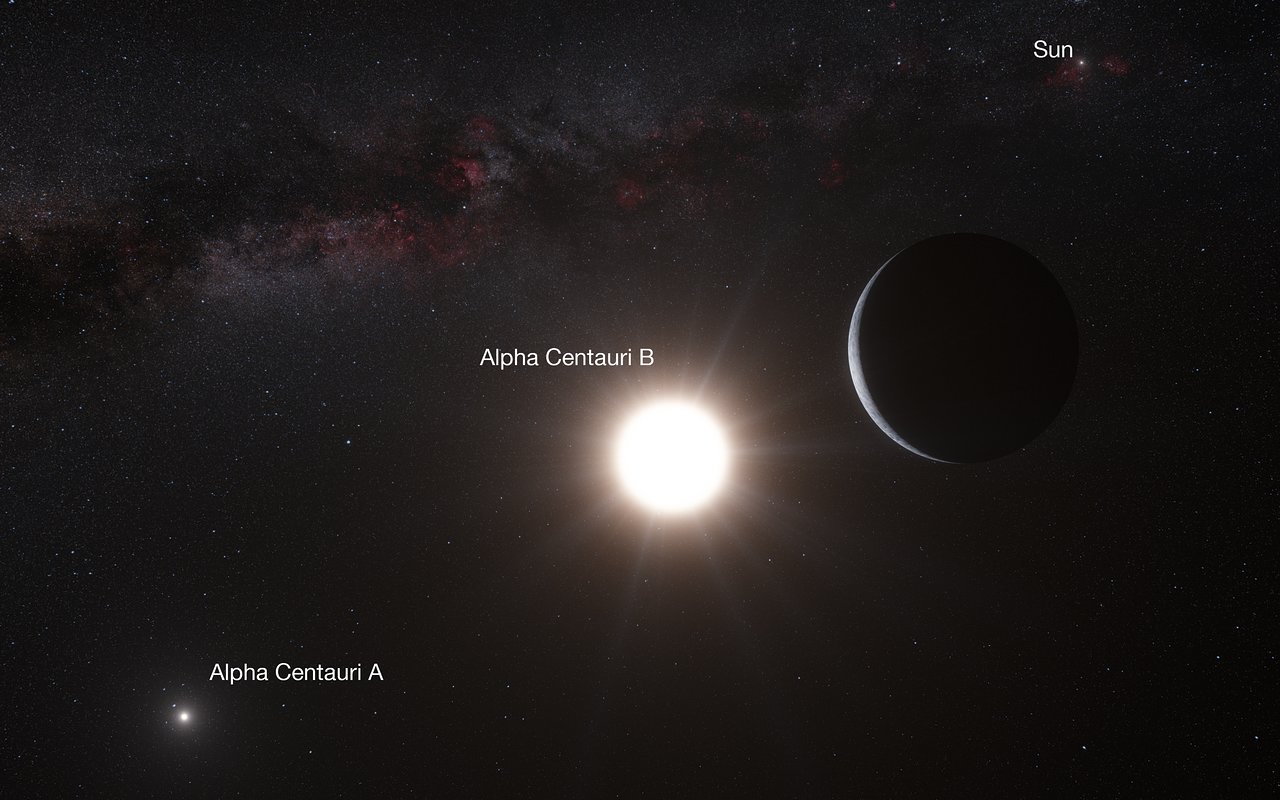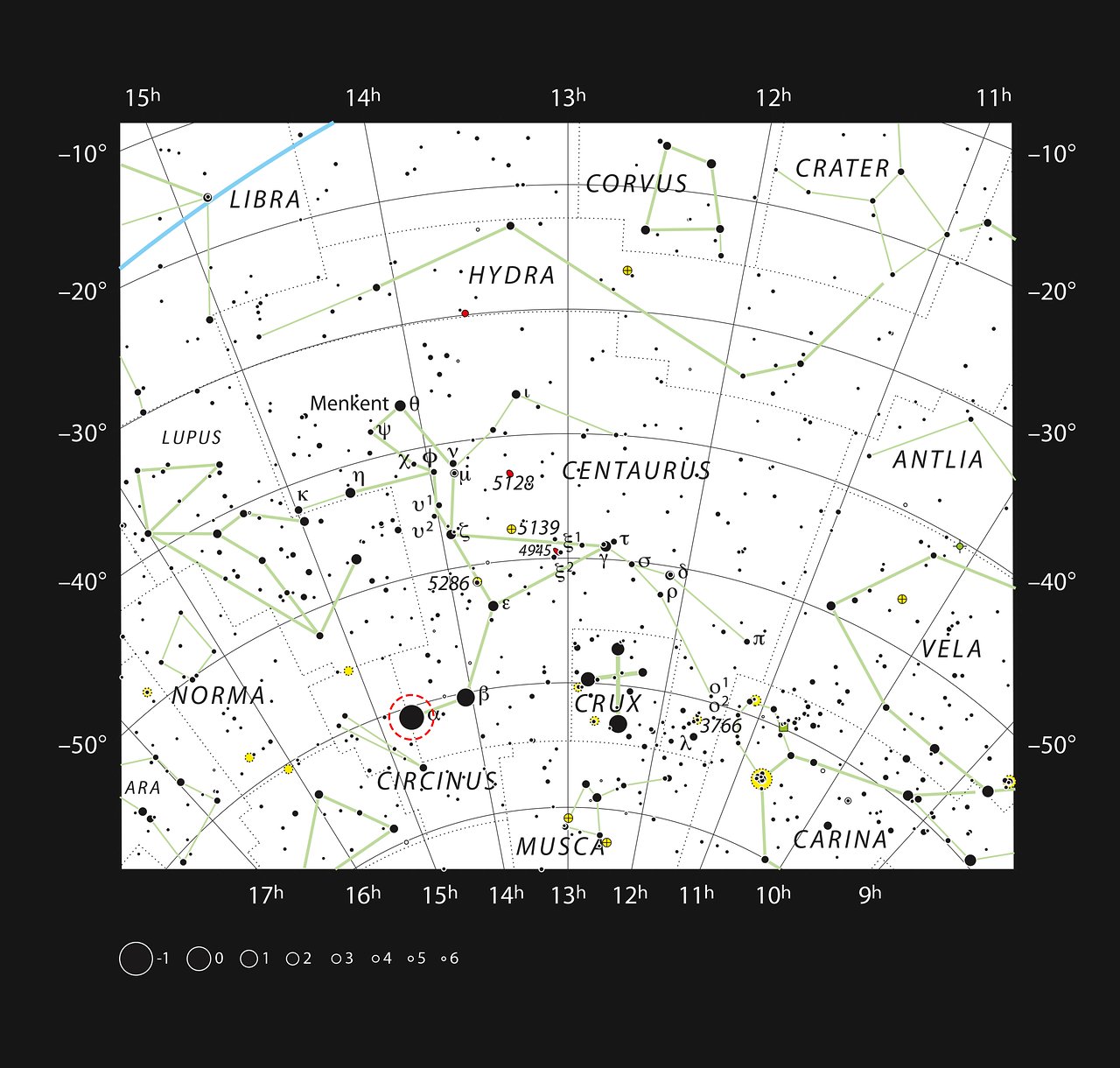Image Credit: (c) Peter Lake - Southern Cross and Pointers - SSO, Cannon 550D SLR
One of the most prominent stars is the southern hemisphere made headlines this week as a team of astronomers, using the ESO Harps Instrument on the 3.6m La Silla observatory in Chile, announced the discovery of an earth sized planet around our closest star.
“Our observations extended over more than four years using the HARPS instrument and have revealed a tiny, but real, signal from a planet orbiting Alpha Centauri B every 3.2 days,” says Xavier Dumusque (Geneva Observatory, Switzerland and Centro de Astrofisica da Universidade do Porto, Portugal), lead author of the paper. “It’s an extraordinary discovery and it has pushed our technique to the limit!”
Image Credit: ESO/L. Calçada/Nick Risinger (skysurvey.org)
Much of the recent news of Extrasolar planet discovery has centered around the Kepler Space Telescope mission, only this week Chris Lintott's & Meg Schwab's team at Planethunters.org also announced the first citizen science discovery of a planet in a 4 star system....come to think of it that has a nice ring to it. ;-)
Back south though, at Siding Spring Observatory which has an exceptional dark southern horizon, Alpha Centauri never sets, as the brightest star in the "Pointers" near the Southern Cross, at its worst it grazes the southern horizon.
Alpha Centauri is a great small telescope target that I regularly show school students. The double take gasp that occurs, when they look at one star visually then suddenly realize, through the telescope, there are actually two stars usually gives way to a comment like "No way!" or the these days "What the?", as they back away from the eye piece and look again visually and take another look through the eyepiece - as if they are a scientist with two irreconcilable datasets. See there IS little bit of scientist in us all! Finally it all gives way to an extended WWWOOOooowwww!
Image Credit: ESO, IAU and Sky & Telescope
Now we can tell the students that there is a little "earth sized" planet, (but really more like an earth sized "Mercury") orbiting the fainter of the two stars Alpha Centauri b. Of course Alpha Centauri is actually a triple star system, but the much fainter (again) third star, Promixa Centauri is not resolvable in small scopes.
Emerging Kepler data shows us that planets around stars are pretty much the rule not the exception and its interesting to see the different techniques for detecting them.
“This is the first planet with a mass similar to Earth ever found around a star like the Sun. Its orbit is very close to its star and it must be much too hot for life as we know it,” adds Stéphane Udry (Geneva Observatory), a co-author of the paper and member of the team, “but it may well be just one planet in a system of several. Our other HARPS results, and new findings from Kepler, both show clearly that the majority of low-mass planets are found in such systems. This result represents a major step towards the detection of a twin Earth in the immediate vicinity of the Sun. We live in exciting times!” concludes Xavier Dumusque.
So next time you use the "pointers" to point out the southern cross and south celestial pole, remember you are also looking at what will always be the closest earth sized planet - our near neighbor, or as we still reserve the right in Australia to reject US based spell checkers, not only is it upside down it can also be - Near Neighbour!





This is a brilliant article. It will help a lot of people. Thanks for sharing it with us.
ReplyDeleteAnalog IC Design